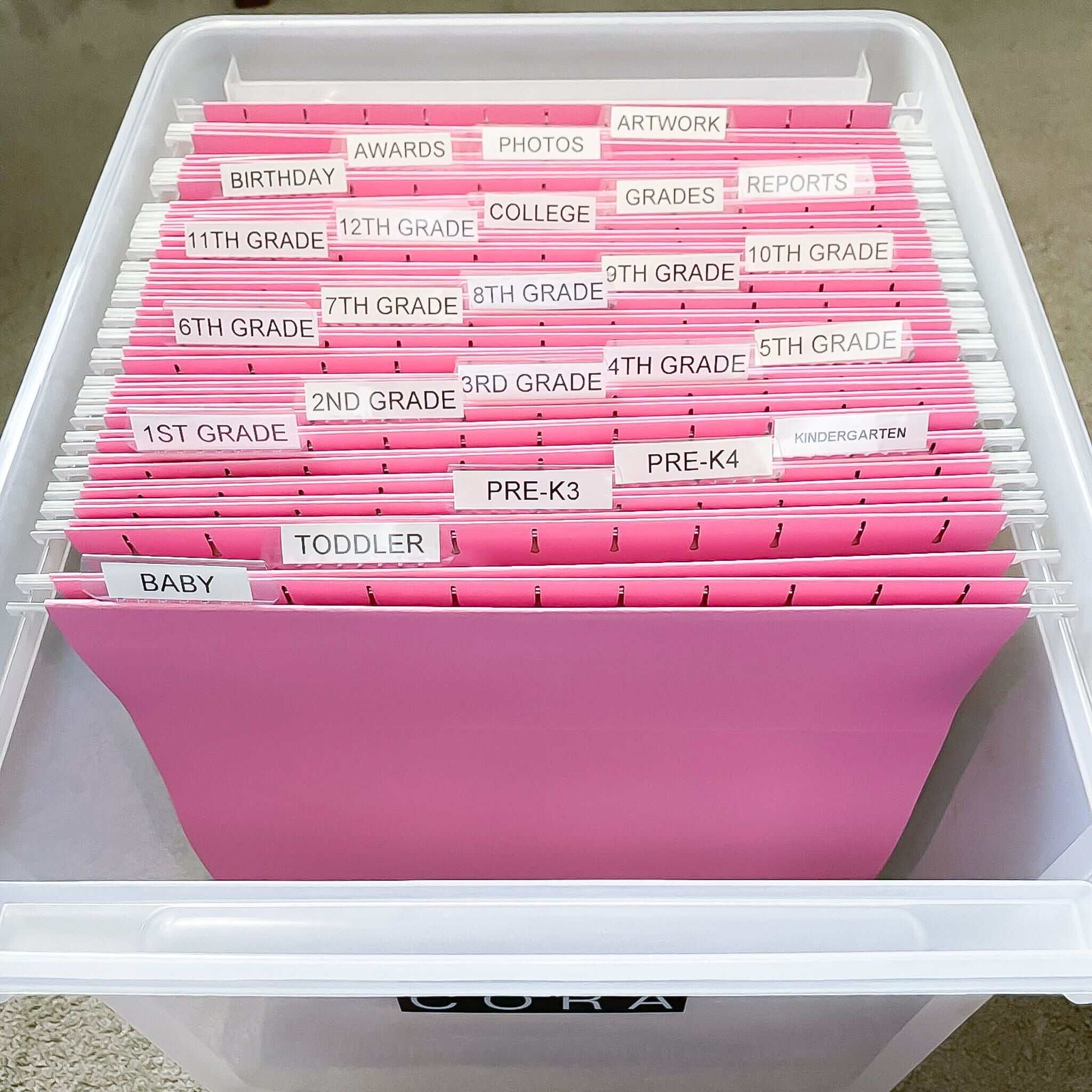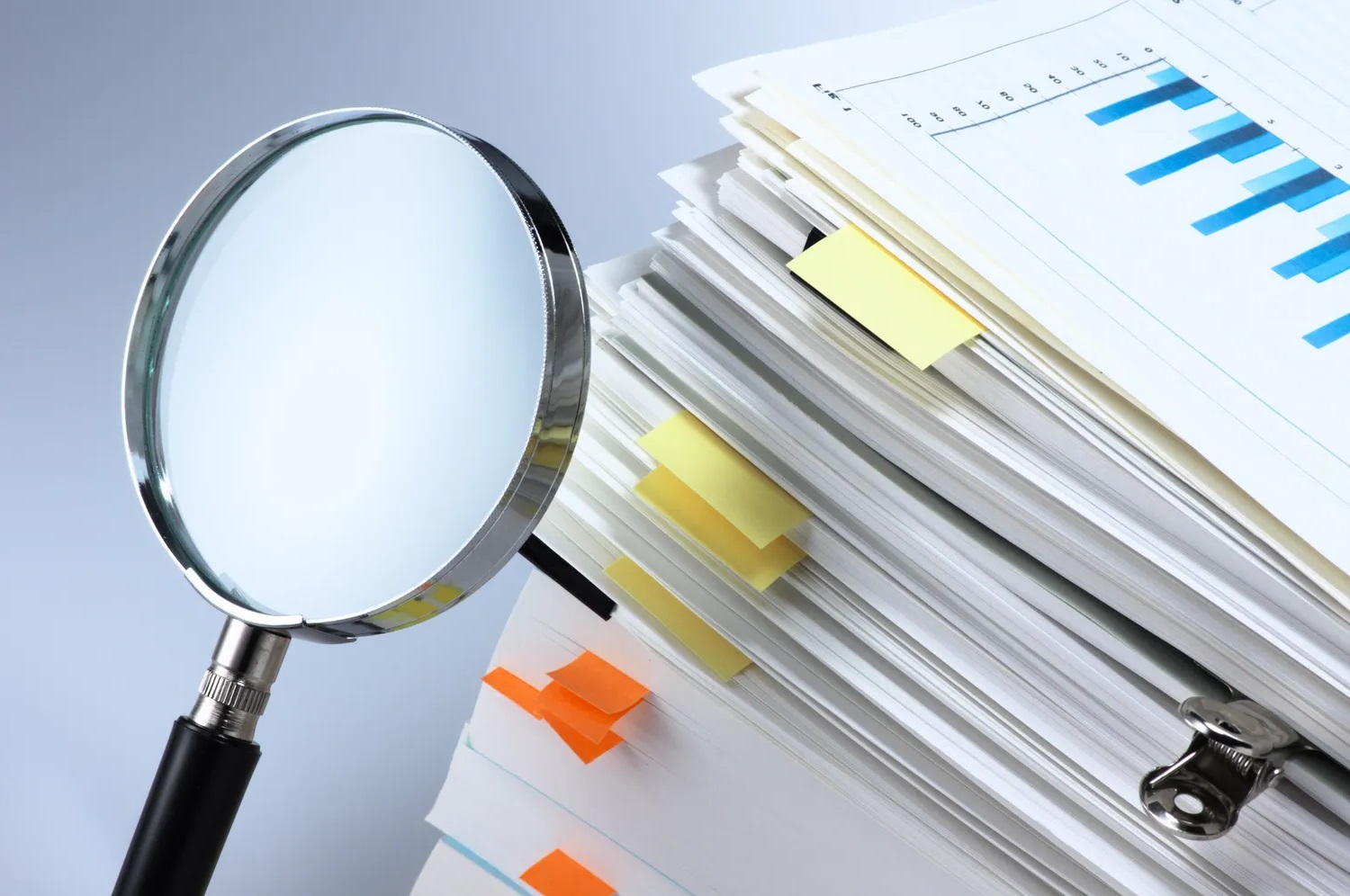

Articles
How To Store Important Documents At Home
Modified: January 6, 2024
Learn how to safely store your important articles at home to ensure their security and longevity. Discover valuable tips and techniques for organizing and preserving your documents.
(Many of the links in this article redirect to a specific reviewed product. Your purchase of these products through affiliate links helps to generate commission for Storables.com, at no extra cost. Learn more)
Introduction:
When it comes to important documents, such as birth certificates, passports, property deeds, and financial records, it is crucial to have a secure and organized method of storage in place. Storing important documents at home provides easy access when needed and ensures the safety and privacy of sensitive information.
In this article, we will explore the various reasons why storing important documents at home is essential, as well as provide practical tips and strategies for choosing the right storage methods, organizing your documents, and maintaining their security.
So, why should you store important documents at home? Let’s dive into the reasons below.
Key Takeaways:
- Secure and organized storage of important documents at home ensures quick access, protection from theft, preservation of personal history, preparation for emergencies, and maintenance of privacy and confidentiality.
- Effective document management involves choosing the right storage methods, organizing documents, creating a home office or storage space, keeping digital copies, implementing a document retention schedule, and ensuring privacy and security.
Read more: How To Store Documents At Home
Why Store Important Documents at Home?
Storing important documents at home is crucial for several reasons, including:
- Quick and Convenient Access: Having your important documents stored at home allows you to easily access them whenever you need them. Whether you’re applying for a new job, renewing your driver’s license, or filing your taxes, having immediate access to your documents can save you time and hassle.
- Protection from Theft: By securely storing your important documents at home, you reduce the risk of theft or loss. Keeping them in a safe and hidden location, such as a locked cabinet or a fireproof safe, ensures that unauthorized individuals cannot access them.
- Preserving Personal History: Important documents often hold sentimental value and contribute to your personal history. Items such as old family photos, letters, and legal documents can provide insights into your heritage and ancestry. By storing these documents at home, you can preserve your family’s legacy for future generations.
- Preparation for Emergencies: Disasters can strike at any time, whether it be a fire, flood, or natural disaster. By having your important documents stored securely at home, you can ensure their protection against such unforeseen circumstances. Investing in fireproof and waterproof containers adds an additional layer of security for your valuable documents.
- Privacy and Confidentiality: Storing your important documents at home grants you control over who has access to them. Many individuals prefer to keep their personal information private and avoid sharing it with third parties. By storing your documents at home, you can maintain the confidentiality of your sensitive information.
With the importance of storing important documents at home established, the next step is to consider the appropriate storage methods and organization techniques. In the following sections, we will delve into these aspects to help you effectively store and manage your important documents.
Choosing the Right Storage Method
When it comes to storing important documents at home, it is essential to choose the right storage method to ensure their protection and accessibility. Here are some options to consider:
- Fireproof and Waterproof Containers: Invest in fireproof and waterproof containers specifically designed for document storage. These containers offer the highest level of protection against fires and floods, keeping your documents safe in the event of an emergency.
- Filing Cabinets: Filing cabinets are a classic choice for document storage. They provide a secure and organized space to keep your important papers. Look for cabinets with locks to ensure added security.
- Binders and Sheet Protectors: Binders and sheet protectors are a great option for organizing and storing important documents, especially if you prefer a more portable solution. Use dividers to separate different categories or types of documents for easy access.
- Document Boxes: Document boxes come in various sizes and are specifically designed for storing important papers. They are often made from durable materials and feature handles for easy transportation.
- Home Safes: Home safes provide an extra layer of security for your important documents. Choose a safe that is fireproof, waterproof, and securely bolted to the floor or wall to prevent theft.
Consider the size, security features, and accessibility when selecting the right storage method for your documents. It may also be helpful to categorize your documents and determine how much space you will need to accommodate them.
Once you have chosen the storage method that suits your needs, the next step is to organize your documents effectively.
Organizing Your Documents
Organizing your important documents is essential for easy access and efficient retrieval. Here are some tips to help you keep your documents organized:
- Create Categories: Start by creating categories for your documents based on their type or purpose. Common categories may include personal identification, financial documents, legal papers, medical records, and household records.
- Label Folders or Sections: Use labels or dividers to clearly identify each category or section. This will make it easier to find specific documents when needed.
- Sort and Group Documents: Within each category, sort the documents chronologically or alphabetically. Additionally, consider grouping related documents together, such as grouping all medical records or insurance policies in one section.
- Create a Document Index: For larger collections of documents, create an index that lists all the documents along with their location. This will help you quickly locate specific documents without having to search through each file or folder.
- Purge Unnecessary Documents: Regularly review your documents and discard any outdated or unnecessary papers. This will help keep your storage space clutter-free and make it easier to find the documents you truly need.
By implementing these organization strategies, you can maintain a well-structured and easily accessible system for your important documents. It’s also a good idea to create a designated home office or storage space to house your documents.
Creating a Home Office or Storage Space
Having a designated home office or storage space for your important documents can greatly improve organization and accessibility. Here are some steps to create an effective home office or storage space:
- Select an Ideal Location: Choose a location in your home that is secure, relatively free from moisture or extreme temperatures, and easily accessible to you. This could be a spare room, a corner of your bedroom, or even a closet.
- Furnish Your Space: Invest in functional furniture such as a desk, shelves, or storage cabinets to keep your documents organized. Consider the size and layout of your space to determine the best furniture options.
- Organize Your Supplies: Keep essential supplies such as pens, paper clips, staplers, and file folders within reach for easy document management.
- Create Work Zones: If your space allows, create separate zones for different tasks, such as a filing zone, a work zone with your computer, and a reference zone with shelves for books or binders.
- Personalize Your Space: Add personal touches such as motivational quotes, artwork, or plants to make your home office or storage space a welcoming and inspiring environment.
Remember to keep your workspace clean and clutter-free to maintain a productive and organized atmosphere. Regularly declutter and reorganize your space to ensure maximum efficiency.
In addition to physical storage, it is also important to consider digital copies of your important documents.
Read more: How To Store Paper Documents
Investing in Fireproof and Waterproof Containers
When it comes to protecting your important documents from fire and water damage, investing in fireproof and waterproof containers is crucial. These specialized containers are designed to withstand extreme temperatures and prevent water from seeping in, ensuring the safety and integrity of your documents in case of emergencies. Here are some reasons why you should consider investing in these containers:
- Fire Protection: Fireproof containers are constructed with materials that can withstand high temperatures, such as steel or fire-resistant composite materials. They are designed to keep the internal temperature below the critical threshold at which paper combusts, effectively safeguarding your documents from the devastating effects of a fire.
- Water Protection: In case of a flood or water leakage, the waterproof feature of these containers provides an added layer of protection. They are built to create a seal that keeps water out, preventing damage to your important documents.
- Durable Construction: Fireproof and waterproof containers are made with durable materials that can withstand impact, ensuring that even if the container falls or is subjected to force, your documents remain secure and undamaged.
- Peace of Mind: By investing in fireproof and waterproof containers, you gain peace of mind knowing that your important documents are protected against unforeseen disasters. This added security allows you to focus on other aspects of your life without worrying about the safety of your documents.
- Accessibility: Many fireproof and waterproof containers are designed with easy-to-use locks or latches, allowing for quick access to your documents when needed. Some containers also come with internal organization features such as file folders or compartments, making it easier to keep your documents organized within the container.
When purchasing fireproof and waterproof containers, consider the size and capacity you require based on the number and size of your documents. Ensure that the containers you choose have been tested and certified by reliable authorities to ensure their effectiveness in protecting your important documents.
Investing in fireproof and waterproof containers is a wise decision to safeguard your valuable documents from the unexpected. However, it is important to remember that these containers are only one part of an effective document storage system. Proper organization and additional storage methods should also be combined to create a comprehensive approach to document management.
Utilizing Filing Cabinets and File Folders
Filing cabinets and file folders are classic tools for organizing and storing important documents. They provide a systematic and easily accessible method for managing your paperwork. Here are some tips on how to effectively utilize filing cabinets and file folders:
- Invest in a Quality Filing Cabinet: Choose a sturdy and durable filing cabinet that meets your storage needs. Look for cabinets with locking mechanisms to ensure the security of your documents.
- Categorize Your Documents: Determine the categories or sections that best suit your document management needs. Common categories may include personal identification, financial records, household documents, and medical records.
- Label Your File Folders: Use clear and descriptive labels on file folders to identify the content of each folder. This makes it easier to find and retrieve specific documents when needed.
- Organize Documents Alphabetically or Chronologically: Choose a sorting method that works best for you. Alphabetical sorting is helpful for documents such as insurance policies or contact lists, while chronological sorting is useful for time-sensitive records or financial statements.
- Consider Color-Coding: Color-coding file folders can be a handy visual aid for quickly identifying certain types of documents or categories. Assign different colors to different document types to make filing and retrieval even more efficient.
- Create a Filing System: Determine the order in which you want to place your file folders in the cabinet. This can be alphabetical, numerical, or based on importance or frequency of use. Stick to your system consistently to maintain organization.
- Purge Unnecessary Documents Regularly: Regularly review your documents and remove any outdated or irrelevant papers. This keeps your filing cabinet clutter-free and ensures that you only keep the documents that are truly necessary.
- Maintain File Folder Integrity: Avoid overstuffing file folders or adding unrelated documents. Keep each file folder limited to a specific category to maintain organization and easy retrieval.
By utilizing filing cabinets and file folders effectively, you can create a streamlined and efficient document storage system. Remember to periodically review and update your filing system to accommodate any changes or new documents that may arise.
Invest in a fireproof and waterproof safe to store important documents such as passports, birth certificates, and property deeds. Keep the safe in a secure and easily accessible location in your home.
Using Binders and Sheet Protectors
Binders and sheet protectors are versatile tools that can be highly effective for organizing and protecting important documents. They allow for easy customization and provide a portable solution for document storage. Here’s how you can make the most of binders and sheet protectors:
- Select the Right Binders: Choose high-quality, durable binders that can withstand regular use. Opt for binders with secure rings that hold the documents tightly in place.
- Invest in Sheet Protectors: Sheet protectors are transparent plastic sleeves that can safeguard individual documents. They protect against spills, tears, and smudges, and provide an extra layer of durability.
- Create Sections and Dividers: Use dividers to separate your documents into sections or categories. You can label the dividers for quick reference and easy navigation within the binder.
- Organize Documents Chronologically, Alphabetically, or by Category: Determine the best organizational method for your documents and arrange them accordingly within the binder. This will help you locate specific documents more efficiently.
- Utilize Binder Pockets: Binder pockets are ideal for storing loose or smaller documents that would otherwise get lost or damaged. Use them to keep receipts, business cards, or other important items organized within the binder.
- Create an Index or Table of Contents: If your binder contains a large number of documents, consider creating an index or table of contents at the beginning to provide a quick overview and reference point for each document’s location.
- Regularly Review and Update: As with any organizational system, it’s important to regularly review the contents of your binder. Remove any outdated or irrelevant documents and add new ones as needed to keep your binder up to date.
- Consider Multiple Binders: If you have a large volume of documents, it may be beneficial to use multiple binders to keep related documents together. For example, you could have separate binders for financial records, medical documents, or personal documents.
Binders and sheet protectors offer flexibility and portability, making them an excellent choice for organizing important documents. Keep in mind that regular maintenance and organization are key to maintaining the effectiveness of this storage method.
Keeping Digital Copies of Documents
In this digital age, keeping digital copies of your important documents is becoming increasingly important. Digital copies provide an additional layer of security and accessibility, allowing you to access and protect your documents even if the physical copies are lost or damaged. Here are some tips for keeping digital copies of your documents:
- Choose a Secure Storage Solution: Select a secure and reliable digital storage solution. This could be cloud storage services like Google Drive, Dropbox, or Microsoft OneDrive. Make sure to choose a password-protected and encrypted platform to ensure the privacy of your documents.
- Scan Your Documents: Use a scanner or smartphone scanning apps to digitize your documents. Scan them in high resolution to ensure the quality and legibility of the digital copies.
- Organize Your Digital Files: Create digital folders and organize your digital documents in a similar manner to your physical storage system. Use descriptive file names and create subfolders to maintain an organized and easily navigable digital filing system.
- Backup Your Digital Copies: Regularly backup your digital documents to multiple locations to prevent data loss. Consider utilizing external hard drives or backing up to multiple cloud storage platforms for added redundancy.
- Maintain Document Security: Use strong passwords and two-factor authentication for your digital storage accounts to enhance document security. Encrypt sensitive documents before uploading them to the cloud to add an extra layer of protection.
- Update and Sync Your Documents: Regularly update your digital copies whenever you make changes to the physical documents. Keep digital and physical versions in sync to ensure that you always have the most up-to-date information.
- Consider Document Management Software: Document management software can provide advanced features such as OCR (Optical Character Recognition) for easier searching and retrieval of your digital documents. Explore different options to find the software that suits your needs.
- Verify and Validate Your Digital Copies: Periodically review your digital copies to ensure their accuracy and completeness. Check that the scanned documents are legible and the file formats are compatible with the software you are using.
By keeping digital copies of your important documents, you can have peace of mind knowing that even if the physical copies are lost or damaged, you have a backup that can be easily accessed and protected.
However, it’s important to note that digital copies should not replace the original physical documents entirely, especially for legal or official purposes. It’s always recommended to consult the appropriate authorities or legal professionals for specific guidelines regarding the acceptance of digital copies.
Read more: How Important Is Home Decor
Implementing a Document Retention Schedule
Implementing a document retention schedule is crucial for effectively managing and organizing your important documents. A document retention schedule outlines how long specific documents should be kept before they are securely disposed of. Here are some steps to help you create and implement a document retention schedule:
- Identify Legal and Regulatory Requirements: Research and understand any legal and regulatory obligations regarding document retention for your specific industry or jurisdiction. Different types of documents may have different retention periods mandated by law.
- Evaluate Document Types: Assess the types of documents you typically handle and categorize them based on their importance, sensitivity, and legal requirements. Common categories may include financial records, employee records, contracts, and tax documents.
- Research Recommended Retention Periods: Consult industry guidelines, professional associations, or legal experts to determine recommended retention periods for each document category. These guidelines can help you determine how long to keep certain documents for business and legal purposes.
- Create a Document Retention Schedule: Develop a comprehensive document retention schedule that outlines the document categories, retention periods, and any necessary disposal procedures. This schedule will serve as a reference for managing and disposing of documents throughout their lifecycle.
- Store Documents Accordingly: Organize and store your documents based on the retention schedule. Use labels or timestamps to indicate the date the document should be disposed of to keep track of its lifecycle.
- Securely Dispose of Documents: When the retention period for a document has expired, follow proper protocols for secure disposal. Shredding, pulping, or incinerating physical documents can help protect sensitive information, while digital documents should be permanently deleted or securely wiped.
- Regularly Review and Update the Schedule: Periodically review and update your document retention schedule to ensure it remains relevant and compliant with any changes in laws or regulations. This will help maintain an efficient and organized document management system.
- Consult Legal Professionals: If you are unsure about specific retention requirements or have legal concerns, it’s always advisable to consult legal professionals who specialize in document retention and compliance.
By implementing a document retention schedule, you can ensure that your document management practices align with legal requirements, maintain organizational efficiency, and protect sensitive information in a responsible manner.
Remember, document retention schedules may vary based on your specific industry, location, and legal obligations. It’s important to tailor your retention schedule to meet the unique requirements of your organization.
Ensuring Privacy and Security of Documents
Ensuring the privacy and security of your important documents is crucial to protecting sensitive information and preventing unauthorized access. Here are some measures you can take to enhance the privacy and security of your documents:
- Physical Document Security: Keep physical documents in a secure location, such as a locked filing cabinet or a dedicated safe. Limit access to these areas and consider installing security cameras or alarms for added protection.
- Implement Access Controls: Restrict access to sensitive documents by implementing access controls within your organization. Only grant access to authorized individuals who have a legitimate need to handle the documents.
- Use Password Protection: Password-protect digital documents and files to prevent unauthorized access. Use strong, unique passwords and consider implementing two-factor authentication for an extra layer of security.
- Encrypt Sensitive Documents: Encrypting sensitive digital documents adds an additional level of security. Encryption ensures that even if the documents are accessed unlawfully, the content remains protected by encoding it using complex algorithms.
- Regularly Update Software and Security Patches: Keep your computer systems and software up to date with the latest security patches. Regularly installing updates helps protect against security vulnerabilities that could be exploited by hackers.
- Secure Your Network: Use strong passwords for your Wi-Fi network and consider enabling network encryption, such as WPA2. Also, be cautious when connecting to public Wi-Fi networks, as they may be insecure and increase the risk of unauthorized access to your documents.
- Train and Educate Employees: Provide training to employees about document security best practices, including the importance of password protection, secure file sharing, and recognizing phishing attempts. Foster a culture of awareness and vigilance to ensure everyone understands their role in maintaining document security.
- Monitor and Audit Document Access: Regularly monitor and audit document access to identify any irregularities or suspicious activities. Implement logs and tracking mechanisms that record who accesses, modifies, or shares documents, enabling you to identify and investigate any potential security breaches.
- Implement Data Backup: Regularly back up your digital documents to secure off-site locations or cloud storage platforms. This ensures that your documents are protected against data loss due to hardware failure, natural disasters, or other unforeseen events.
- Dispose of Documents Properly: When documents are no longer needed or their retention period has expired, dispose of them properly. Shred physical documents to prevent sensitive information from falling into the wrong hands, and securely delete digital files to ensure they cannot be recovered.
By implementing these privacy and security measures, you can protect the confidentiality and integrity of your important documents, minimizing the risk of unauthorized access or data breaches.
Remember, document security is an ongoing effort, and it’s essential to stay vigilant and up to date with the latest security practices and technologies to ensure the continued protection of your documents.
Regularly Reviewing and Updating Your Storage System
Regularly reviewing and updating your storage system is essential for maintaining an efficient and organized method of storing your important documents. By periodically assessing and reassessing your storage system, you can identify areas of improvement, adapt to changing needs, and ensure the long-term effectiveness of your document management practices. Here’s how you can go about it:
- Schedule Regular Reviews: Set specific dates or intervals throughout the year to conduct thorough reviews of your storage system. This can be done quarterly, biannually, or annually, depending on the volume and nature of your document management needs.
- Assess Your Document Inventory: Begin by assessing the types and quantity of documents you currently have. Determine if any additional documents need to be added to the system or if any can be removed or archived.
- Identify Problem Areas: Look for any issues or challenges within your storage system. This could include overcrowded filing cabinets, disorganized binders, or outdated digital file structures. Identify areas that could benefit from improvement or optimization.
- Update and Improve Organization: Based on your assessment, update the organization and categorization of your documents. This may involve reorganizing file folders, creating new sections in binders, or improving the naming conventions of digital files. Ensure consistency and clarity to facilitate easy retrieval.
- Implement Efficiency Measures: Identify opportunities to enhance the efficiency of your storage system. This could include implementing automation tools for digital document management, utilizing barcode or QR code scanning for physical documents, or exploring software solutions for better organization and retrieval.
- Review Retention Schedule: Revisit your document retention schedule and ensure its accuracy and compliance with any new regulations or legal requirements. Make any necessary updates or modifications to align with current standards.
- Consider Storage Expansion: If you find that your current storage system is reaching its capacity, consider expanding your storage options. This could involve investing in additional filing cabinets, binders, or digital storage space to accommodate your growing document inventory.
- Train and Educate Staff: If you have a team involved in managing the storage system, provide training and refresher sessions on the proper organization and maintenance of documents. Foster a collaborative environment to ensure everyone is following consistent practices.
- Maintain Consistency: Regularly review and update your storage system, but also ensure consistency in your practices moving forward. Implement standard procedures for adding new documents, filing away papers, and updating digital files to maintain a streamlined and organized system.
- Solicit Feedback: Engage with others who use the storage system, such as colleagues or team members, and gather their feedback and suggestions. Incorporate their input to improve the overall functionality and efficiency of the storage system.
By regularly reviewing and updating your storage system, you can ensure that it aligns with your evolving needs, promotes efficient document management, and optimizes the retrieval process. Remember that document management is an ongoing process, and periodic reviews are essential to adapt to changes and improve your overall workflow.
Implementing these practices will help you maintain a well-organized and secure storage system for your important documents, enabling easy access, efficient retrieval, and peace of mind.
Conclusion
Storing important documents at home is a vital aspect of maintaining organization, accessibility, and security. Whether it’s for personal or professional purposes, having a well-designed storage system ensures that your important documents are protected, readily available, and easy to manage.
In this article, we have explored the reasons why storing important documents at home is essential, such as quick and convenient access, protection from theft, preservation of personal history, preparation for emergencies, and maintaining privacy and confidentiality.
We have discussed various methods and tools for effectively storing and organizing your important documents, including fireproof and waterproof containers, filing cabinets and file folders, binders and sheet protectors, as well as keeping digital copies of documents.
Furthermore, we explored the importance of implementing a document retention schedule to ensure legal compliance and efficient document management. Additionally, we emphasized the necessity of safeguarding the privacy and security of your documents through measures such as access controls, password protection, encryption, and regular monitoring.
Lastly, we touched on the importance of regularly reviewing and updating your storage system to adapt to changing needs and maintain optimal organization. By incorporating feedback, training staff, and utilizing efficient practices, you can ensure that your storage system remains effective and streamlined.
In conclusion, storing important documents at home requires careful consideration, strategic planning, and ongoing effort. By implementing the ideas and strategies discussed in this article, you’ll be well-equipped to create a secure and efficient document storage system that meets your unique needs.
Remember, the key to successful document management is finding a balance between accessibility, security, and organization. By keeping your important documents well-protected and easily accessible, you’ll have peace of mind and the ability to efficiently manage and retrieve your documents whenever needed.
Frequently Asked Questions about How To Store Important Documents At Home
Was this page helpful?
At Storables.com, we guarantee accurate and reliable information. Our content, validated by Expert Board Contributors, is crafted following stringent Editorial Policies. We're committed to providing you with well-researched, expert-backed insights for all your informational needs.














0 thoughts on “How To Store Important Documents At Home”